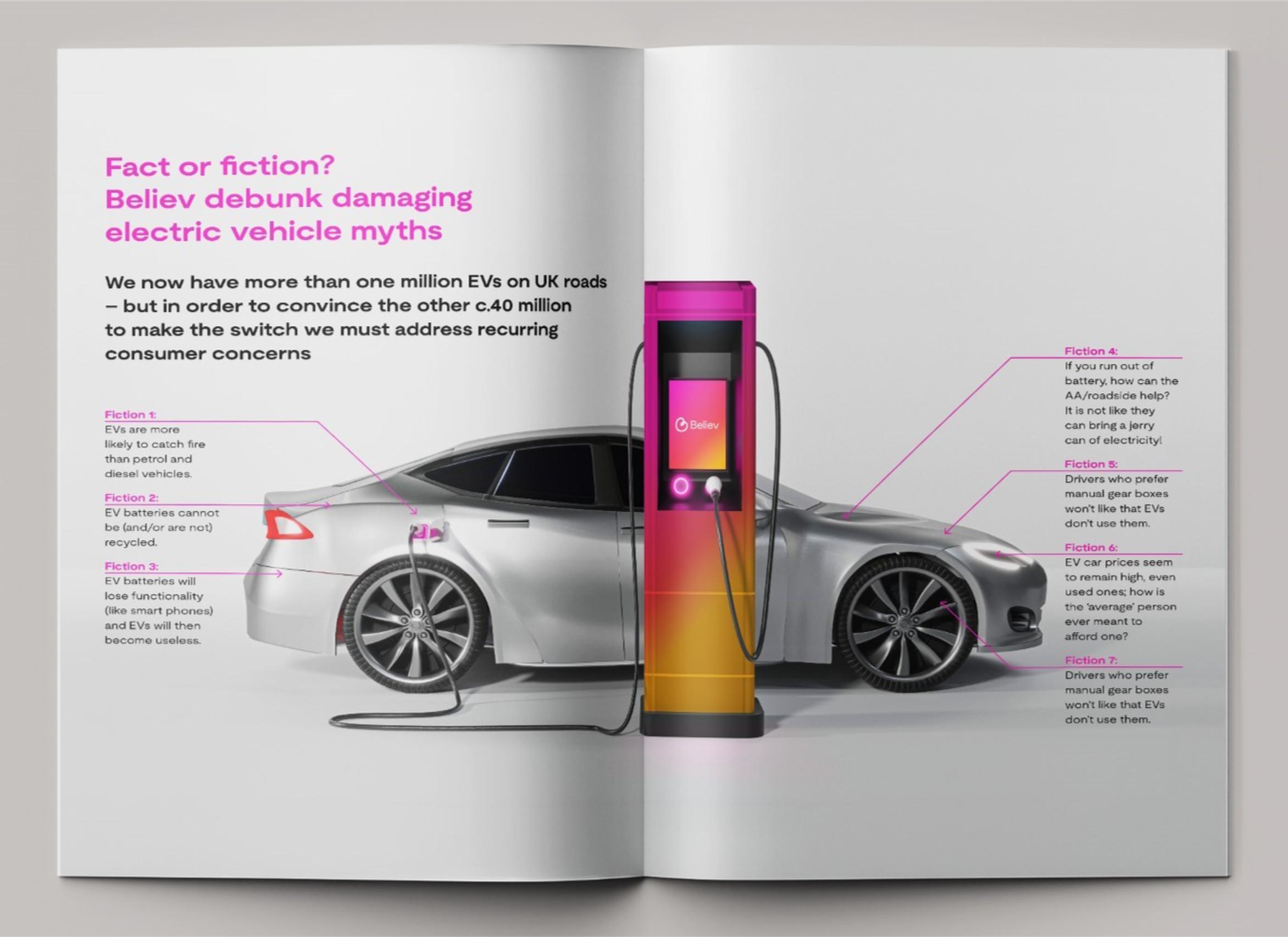

Electric vehicles are becoming increasingly popular as a more environmentally friendly alternative to traditional fossil fuelled vehicles. We’ve now got more than one million EVs on UK roads – but there is still work to be done to convince the other 40 or so million to make the switch.
To create this consumer confidence, we must debunk the misinterpreted and false facts surrounding EVs.
There is no doubt that misconceptions and inaccurate or misleading news about electric vehicles are damaging. It’s understandable that drivers might be nervous of change and making the switch, and so it is essential that we de-bunk and clarify the myths surrounding EVs and address the most common concern. By doing so, we will further consumer confidence and help to decarbonise transport.
Fiction 1: EVs are more likely to catch fire than petrol and diesel vehicles.
Fact: Recent independent studies have shown that the risk of EVs catching fire is much lower than petrol and diesel vehicles. Indeed, petrol and diesel vehicles are almost 20 times more likely to catch fire than EVs. Petrol and diesel vehicles have engines that run hot and carry the risk of other fluids leaking onto a hot exhaust, which can lead to a vehicle fire.
Lithium-ion batteries, commonly used in EVs, and emerging technologies such as lithium-iron phosphate (LFP) batteries and solid-state batteries – which contain no flammable liquid electrolytes – virtually eliminate this risk altogether. ?
Fiction 2: EV batteries cannot be (and/or are not) recycled.
Fact: While EV batteries cannot be 100% recycled, there are various techniques to recover up to 95% of the key raw materials from an EV battery pack and recycle them back into the battery manufacturing supply chain.
Fiction 3: EV batteries will lose functionality (like smart phones) and EVs will then become useless.
Fact: EV batteries, just like any other battery, will lose a small amount of health over a very long time with use, but there are small adjustments you can make to preserve your battery’s peak performance for longer. For example, driving economically, efficiently, and at a consistent speed, helps maintain optimal battery life.
Conversely, of course, the faster you drive the more strain is placed on the battery.
The cells can still provide a minimum 70% of their capacity even after 200,000 miles. In tests, a Tesla Model S taxi that journeyed more than 300,000 miles retained at least 82% of its battery’s health.
Fiction 4: If you run out of battery, how can the AA/roadside help? It is not like they can bring a jerry can of electricity!
Fact: Most EVs are designed to navigate you to the nearest charge point when battery levels fall below 5%. EV roadside assistance can include taking the vehicle to the nearest chargepoint on a flatbed or deploying a small level of charge to the battery to allow the driver to take the vehicle to a local chargepoint.
In fact, recent AA figures showed that the chances of an electric vehicle breaking down because of running out of power had reached a record low. Now, just 2.3% of EV call outs were due to batteries having limited or no charge. This is down from 8.3% in 2015 and 4.3% in 2021.
Fiction 5: Drivers who prefer manual gear boxes won’t like that EVs don’t use them.
Fact: While there are some niche EV models that offer a simulated manual transmission, the vast majority of electric vehicles drive like an automatic vehicle because they don’t require a gearbox or clutch. EVs are simpler and better for it. The seamless power delivery, simplified design, improved efficiency, and additional space and weight benefits make automatic transmissions the preferred choice for most EVs drivers.
In addition to the above, electric cars come with less mechanical complexity than petrol and diesel manual vehicles. This simply means there is less to go wrong – no clutches to burn out and change (and therefore none of the nasty smells!), and no transmission fluid to replenish.
Fiction 6: EV car prices seem to remain high, even used ones; how is the ‘average’ person ever meant to afford one?
Fact: Even though EVs currently have higher prices, on an average they are cheaper to run – costing much less than petrol or diesel, with significantly less life cycle cost. The increase in supply of new EVs has now hit the second-hand market. In fact, Auto Express magazine recently reported some second-hand EVs being cheaper than their petrol or diesel equivalents. And, with EV battery prices falling, and as the technology scales and improves, consumers can expect the cost of new EVs to reduce over the next few years.
Guy Bartlett is chief executive of chargepoint Operator Believ
TransportXtra is part of Landor LINKS
© 2025 TransportXtra | Landor LINKS Ltd | All Rights Reserved
Subscriptions, Magazines & Online Access Enquires
[Frequently Asked Questions]
Email: subs.ltt@landor.co.uk | Tel: +44 (0) 20 7091 7959
Shop & Accounts Enquires
Email: accounts@landor.co.uk | Tel: +44 (0) 20 7091 7855
Advertising Sales & Recruitment Enquires
Email: daniel@landor.co.uk | Tel: +44 (0) 20 7091 7861
Events & Conference Enquires
Email: conferences@landor.co.uk | Tel: +44 (0) 20 7091 7865
Press Releases & Editorial Enquires
Email: info@transportxtra.com | Tel: +44 (0) 20 7091 7875
Privacy Policy | Terms and Conditions | Advertise
Web design london by Brainiac Media 2020